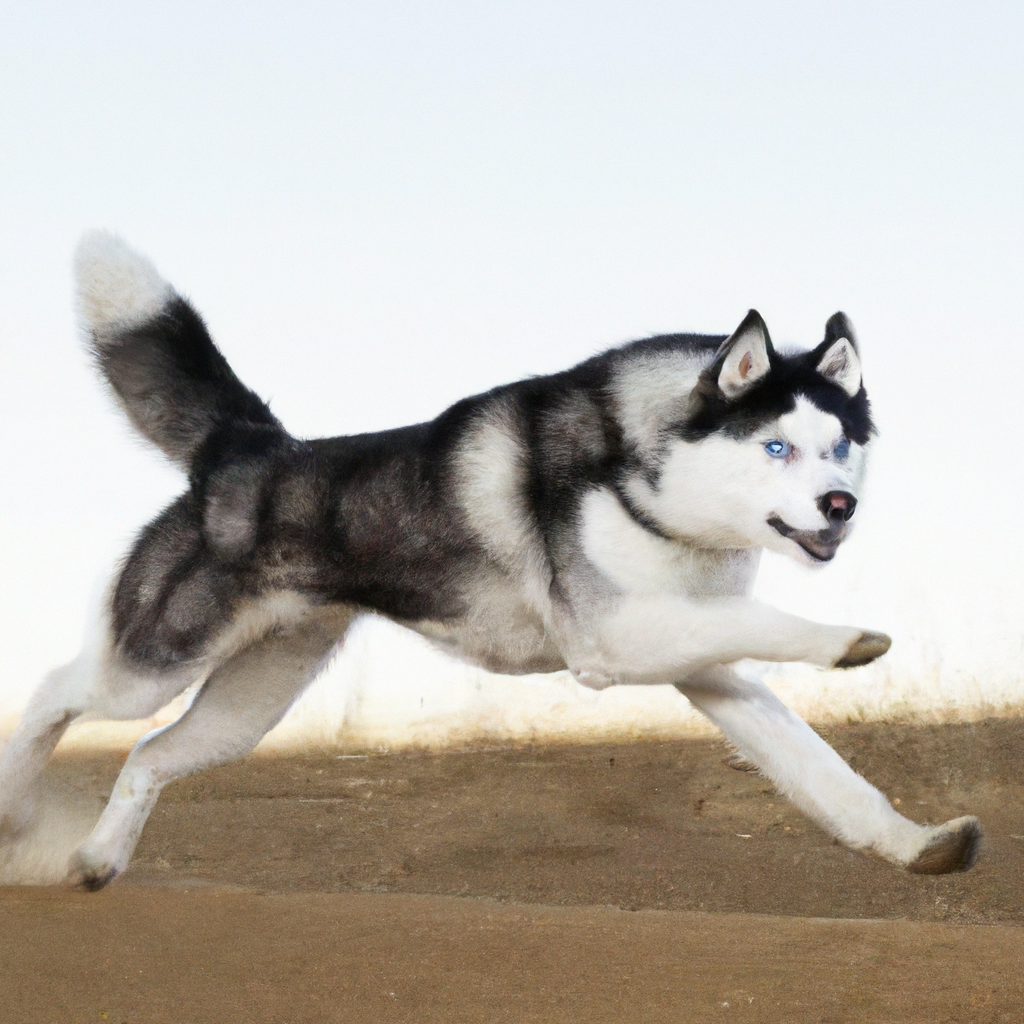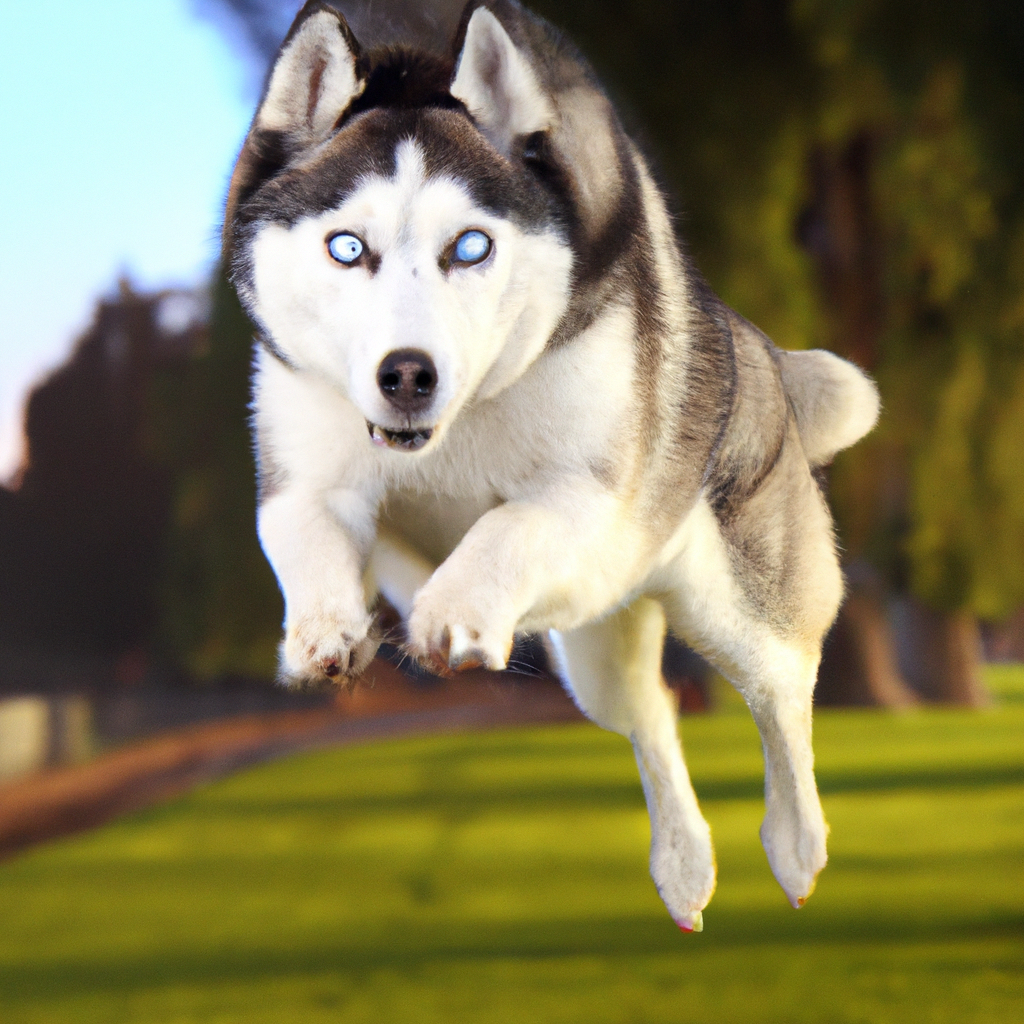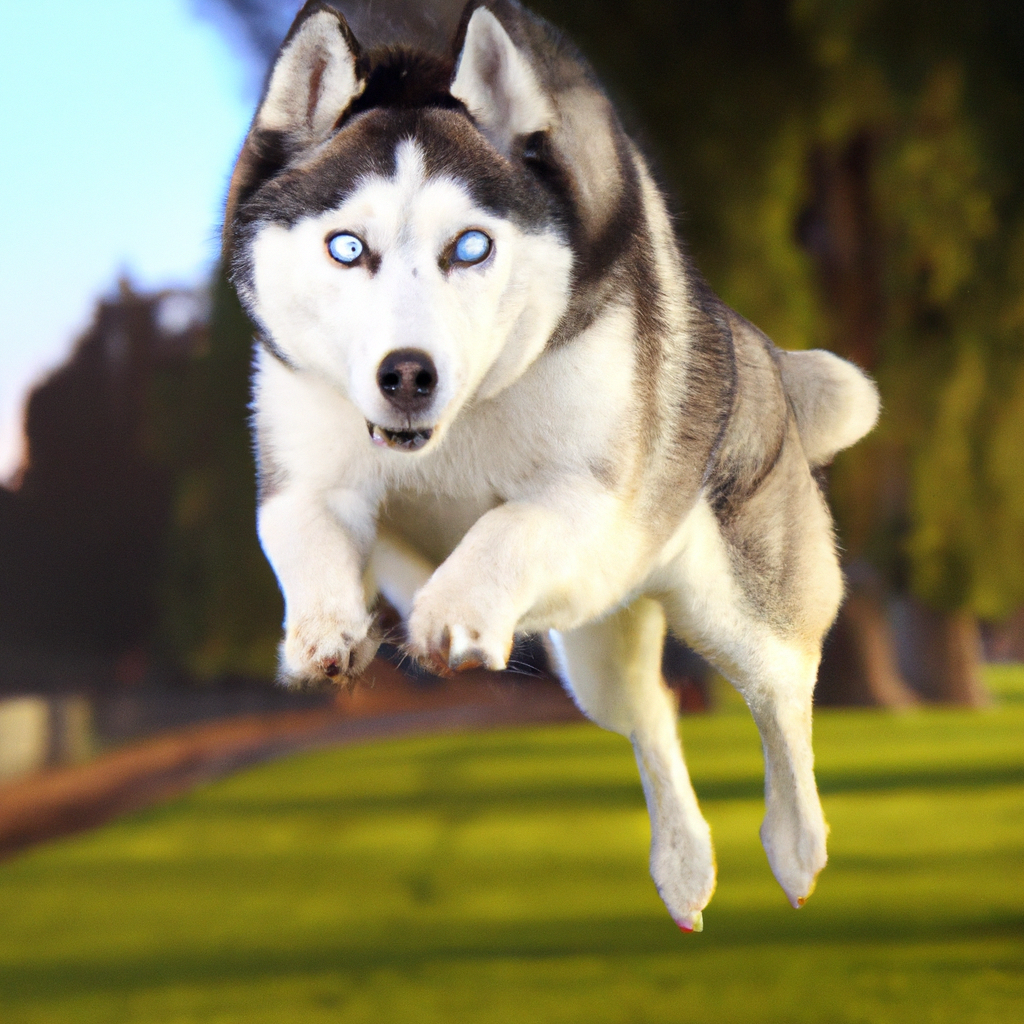Have you ever wondered just how fast a husky can run? Huskies are known for their incredible speed and endurance, with a unique ability to cover long distances in a short amount of time. In this article, we will explore the husky’s impressive running capabilities, revealing the astonishing speeds they can reach and the factors that contribute to their remarkable athleticism. Whether you are a husky enthusiast or simply curious about their incredible abilities, this article will provide fascinating insights into the speed and agility of these majestic creatures. So, get ready to be amazed by the astonishing speeds that huskies are capable of achieving!

Physical characteristics of a Husky
Huskies are medium-sized dogs with a strong build and an athletic appearance. They have a well-balanced body structure, featuring a deep chest, strong shoulders, and a straight back. Their legs are positioned well apart, providing them with agility and balance while running. Huskies have a thick double coat that helps protect them from cold weather, with a dense undercoat and a longer, waterproof topcoat. They also have erect ears and a bushy tail that curls over their back when at rest.
Muscle structure of a Husky
Huskies possess a unique muscle structure that contributes to their impressive running abilities. Their muscles are well-developed, especially in the chest, shoulders, and hips, which enable them to generate significant power and propel themselves forward. The strong muscles in their hindquarters provide the necessary drive for their rapid acceleration and maintain speed over long distances. This muscle structure, combined with their efficient biomechanics, allows Huskies to reach impressive speeds while maintaining endurance.
Breed standards of a Husky
The breed standards set by kennel clubs outline the desired characteristics and appearance of Huskies. In terms of speed, the standards do not specify a particular speed requirement. Instead, they emphasize the overall balance and athleticism of the breed. Breed standards stress the importance of a well-built body, strong muscles, and a gait that is smooth and effortless. While speed is not emphasized, a Husky’s physical attributes contribute to their running ability, making them efficient and agile runners.
Variations in speed among Huskies
While Huskies are generally known for their speed and endurance, there can be variations in their running abilities based on individual genetics. Some Huskies may demonstrate exceptional speed, while others might have a more moderate pace. Factors such as genetics, physical condition, and training can influence the top speed a Husky can achieve. It is important to take into account that each Husky is unique and may have their own strengths and limitations when it comes to running.
Factors affecting a Husky’s speed
Several factors can influence a Husky’s speed, apart from their physical characteristics. Age and physical condition play a crucial role. Younger Huskies tend to have more energy and may reach higher speeds compared to older dogs. Additionally, a Husky’s training and conditioning regimen are significant factors. Regular exercise, stamina-building workouts, and proper training techniques can enhance a Husky’s speed and overall running performance.
Huskies as sled dogs
Huskies have a rich history as sled dogs, particularly in regions with cold climates. They were bred for their remarkable strength, endurance, and speed, making them ideal for pulling sleds over long distances in challenging terrains. Sled dog racing, a popular sport in which Huskies participate, showcases their exceptional running abilities. These events test not only the speed of the dogs but also their agility and cooperation as a team.
Sled dog racing
Sled dog racing is a thrilling and competitive sport that showcases the Huskies’ running abilities. Teams of Huskies, guided by mushers, pull sleds through various terrains and distances. Races can vary in length, ranging from sprint races covering a few miles to long-distance races spanning hundreds of miles. Huskies must maintain a consistent and swift pace throughout the race, showcasing their endurance and speed. These races demonstrate the Huskies’ remarkable running ability and their well-deserved reputation as exceptional sled dogs.
Speed records in sled dog racing
Over the years, numerous speed records have been set in sled dog racing, highlighting the astonishing capabilities of Huskies. The fastest recorded speed in a sled dog race is around 24 miles per hour (38 km/h). However, it is essential to note that the average speed maintained by Huskies during races can vary, influenced by factors such as terrain, weather conditions, and distance covered. These records and achievements showcase the incredible running speed and endurance of Huskies in sled dog racing.

Huskies in other competitions
Aside from sled dog racing, Huskies also excel in other competitive sports that showcase their running abilities and athleticism. Canicross, a sport that involves running with dogs, has gained popularity among Husky owners. In this activity, the Husky is harnessed to the runner, allowing them to run together as a team. Additionally, Huskies participate in bikejoring, where they pull a cyclist, and skijoring, where they pull a skier. These sports highlight the Huskies’ running speed and their ability to work as a team with their human counterparts.
Husky’s running ability as a pet
As pets, Huskies require regular exercise due to their high energy levels and natural inclination to run. It is recommended that Huskies receive at least one to two hours of exercise daily, which can involve activities such as running, hiking, or playing interactive games. It is crucial to ensure that their exercise needs are met to prevent restlessness and potentially destructive behavior. Engaging in activities that allow Huskies to run, such as jogging or participating in dog sports, can help channel their energy and satisfy their natural instincts.
Exercise needs for Huskies
Due to their running abilities and high energy levels, Huskies have specific exercise needs that should be met to keep them happy and healthy. In addition to regular walks and playtime, Huskies benefit from more vigorous activities that engage their muscles and provide mental stimulation. Running alongside a bicycle, playing fetch, or participating in agility training are great options to help Huskies fulfill their exercise requirements. Providing varied and challenging workouts helps promote their overall fitness and enhances their running ability.
Running with a Husky
Running with a Husky can be a fantastic experience for both the dog and the owner. Huskies thrive on physical activity and enjoy the opportunity to run alongside their human companions. When running with a Husky, it is essential to use a sturdy harness and leash to maintain control and ensure their safety. Starting with shorter distances and gradually increasing the length and intensity of the runs is recommended to prevent injuries and build endurance. Always be mindful of the weather conditions and the Husky’s comfort level while running to ensure a positive running experience.
Comparisons to other dog breeds
While Huskies are known for their impressive running ability, it is interesting to compare their speed to other breeds known for their athleticism. Greyhounds are renowned for their incredible speed, with top speeds reaching up to 45 miles per hour (72 km/h). Border Collies, on the other hand, are celebrated for their agility and quickness in dog sports such as agility trials. German Shepherds, known for their versatility, can also exhibit impressive running abilities and excel in activities such as obedience trials and tracking competitions.
Popular misconceptions about Husky’s speed
Some popular misconceptions surround the running speed of Huskies, often stemming from their resemblance to wolves and assumptions about their size and strength. While Huskies do share physical similarities with wolves, their domestication and specific breeding have resulted in differences in behavior and running abilities. Additionally, their medium size and lean build may lead to misconceptions about their strength. However, their well-developed muscles and efficient running mechanics enable them to reach impressive speeds, despite their moderate size.
Similarity to wolves
One common misconception about Huskies is that they possess the same running abilities as wolves due to their similar physical appearance. While Huskies do share genetic ancestry with wolves, they have been selectively bred for specific traits, including running speed. Domestication and selective breeding have resulted in unique characteristics that differentiate Huskies from their wild cousins. Therefore, while they may share some resemblances, it is important to recognize that Huskies have been specifically bred for their running abilities as sled dogs and have distinct features that contribute to their speed.
Size and strength misconceptions
Another misconception about Huskies relates to their size and perceived lack of strength. Huskies are medium-sized dogs, typically weighing between 35 and 60 pounds (16-27 kg). While this size may seem less imposing compared to larger breeds, their muscle structure and overall physique enable them to generate significant power and sustain high speeds. Huskies’ athletic build and efficient running mechanics compensate for their moderate size, allowing them to excel in various sports and activities, including sled dog racing.
Tracking and measuring a Husky’s speed
Measuring a Husky’s speed can be an interesting endeavor for enthusiasts and professionals alike. Several methods can be utilized to track and measure a Husky’s running speed, providing valuable insights into their performance and potential. One common method is the use of GPS trackers, which can accurately record the distance covered and the speed reached during a run. Additionally, stopwatch timing can be employed in controlled environments, allowing for precise measurements of a Husky’s speed over a set distance.
Methods to measure speed
To accurately measure a Husky’s speed, it is important to utilize reliable methods. GPS trackers with built-in speed tracking features can provide real-time data on a Husky’s speed during a run. These devices often record the maximum speed achieved and can help track performance over time. Stopwatch timing is another effective method, wherein the time taken to cover a set distance is measured. This allows for precise calculations of the Husky’s average speed. Using a combination of these methods can provide a comprehensive understanding of a Husky’s running abilities.
Common speeds of Huskies
Huskies are known for their impressive running speed, which can vary depending on various factors. During regular exercise or recreational runs, Huskies can maintain speeds ranging from 10 to 20 miles per hour (16-32 km/h). However, when reaching their maximum potential in activities such as sled dog racing, Huskies have been recorded to reach speeds of up to 24 miles per hour (38 km/h). It is essential to remember that each Husky is unique, and their individual genetics, physical condition, and training can affect their speed.
Fun facts about Huskies
- While Siberian Huskies and Alaskan Huskies are both popular breeds, they have slight differences in their characteristics. Siberian Huskies are recognized as a pure breed by kennel clubs, whereas Alaskan Huskies are a mixed breed developed specifically for sled dog racing.
- The speed of a Husky is closely tied to their heritage as sled dogs. The traits that contribute to their running ability, such as their muscle structure and endurance, have been selectively bred for generations to enhance their performance in tasks like sled pulling. Their remarkable speed is a testament to their heritage as working dogs.
In conclusion, Huskies possess physical characteristics, such as their well-built bodies and strong muscles, that make them agile and fast runners. Their speed can vary depending on factors such as genetics, age, physical condition, and training. Huskies excel in activities like sled dog racing and other sports that showcase their running abilities. Comparisons to other dog breeds highlight the unique qualities of Huskies as runners. While some misconceptions exist, proper understanding of their anatomy and breeding can clarify these misconceptions. Tracking and measuring a Husky’s speed can be achieved through methods like GPS tracking and stopwatch timing. Huskies require regular exercise to satisfy their high energy levels, and running with them can be a rewarding experience. Overall, Huskies are impressive runners that demonstrate their speed and endurance in various settings.
